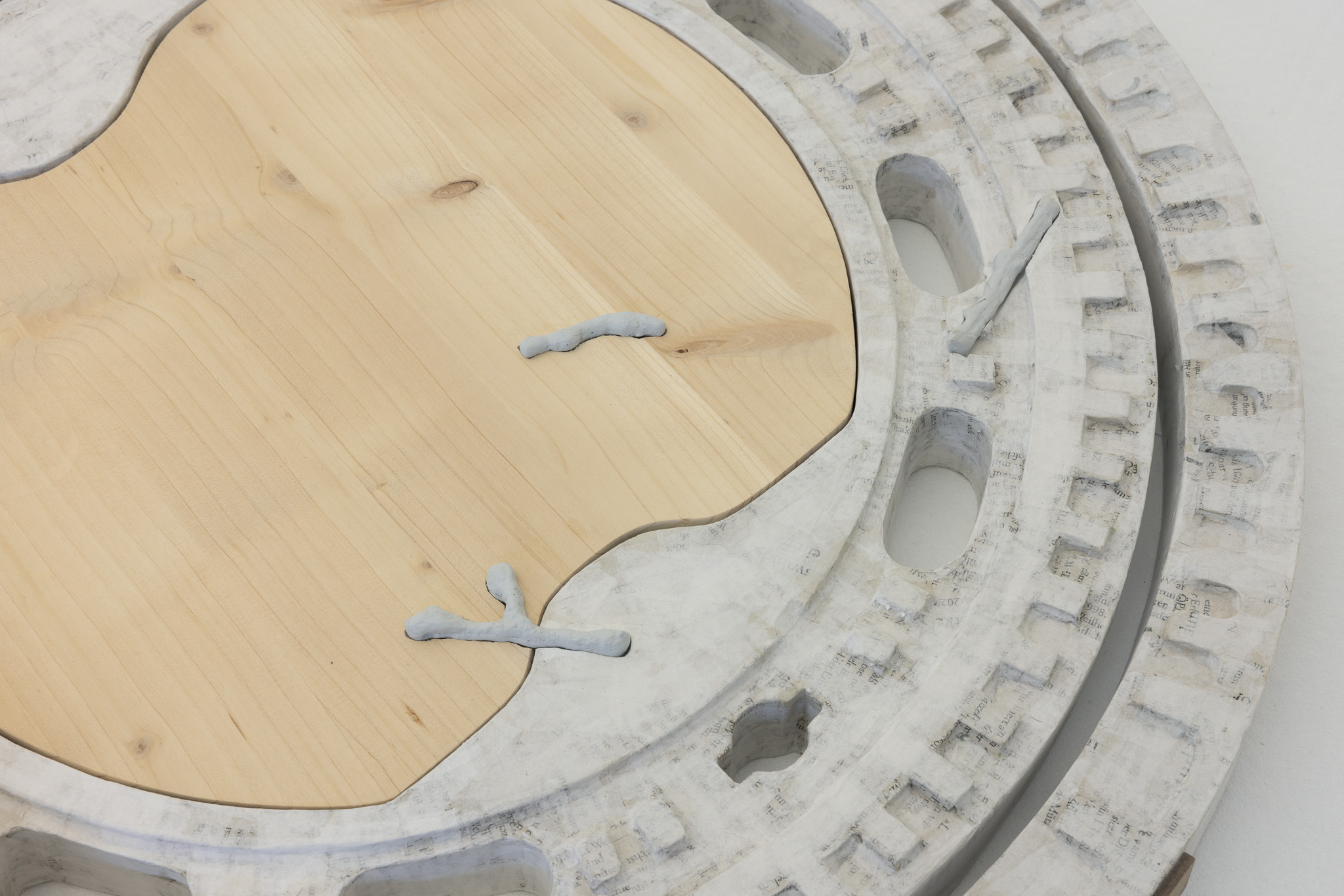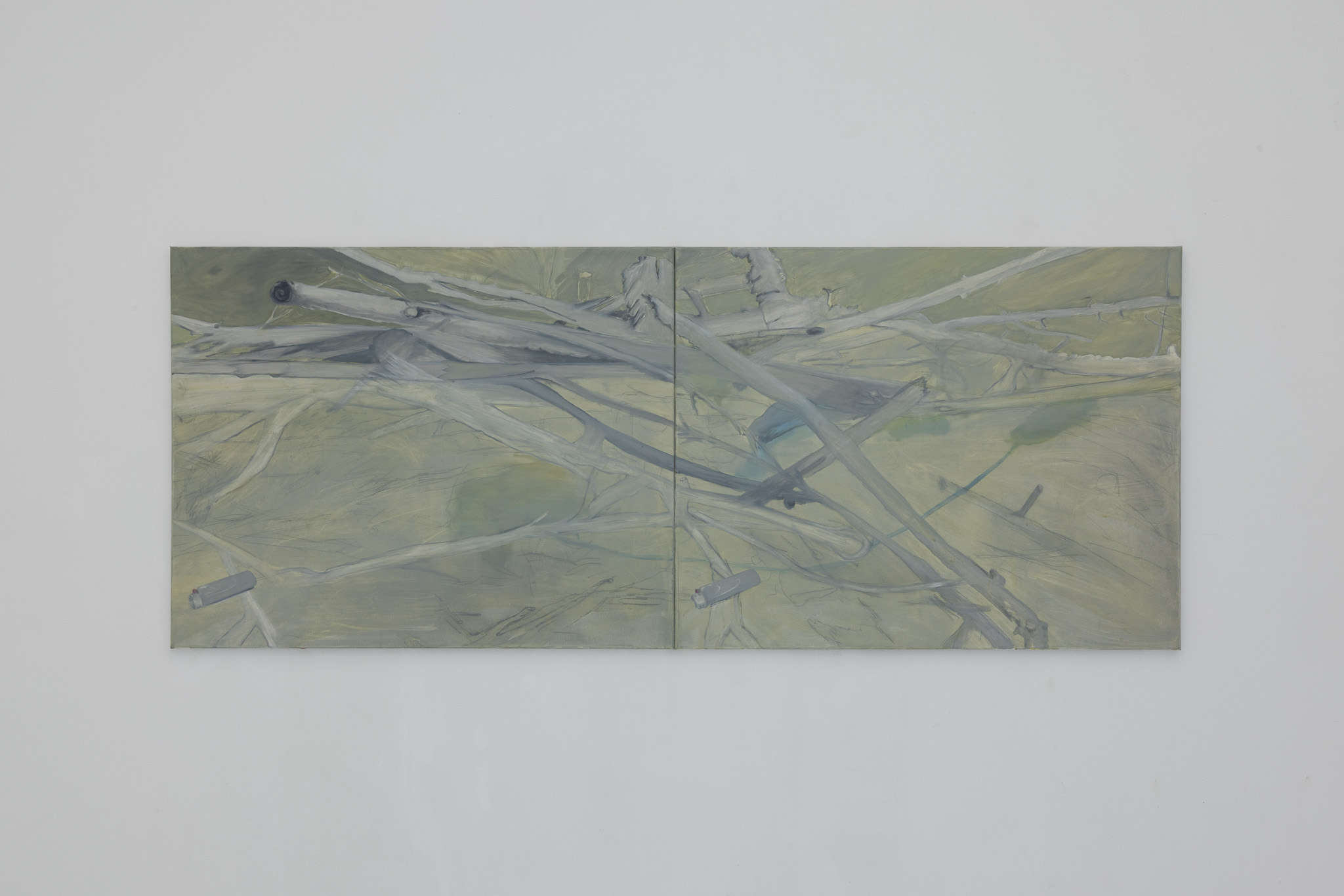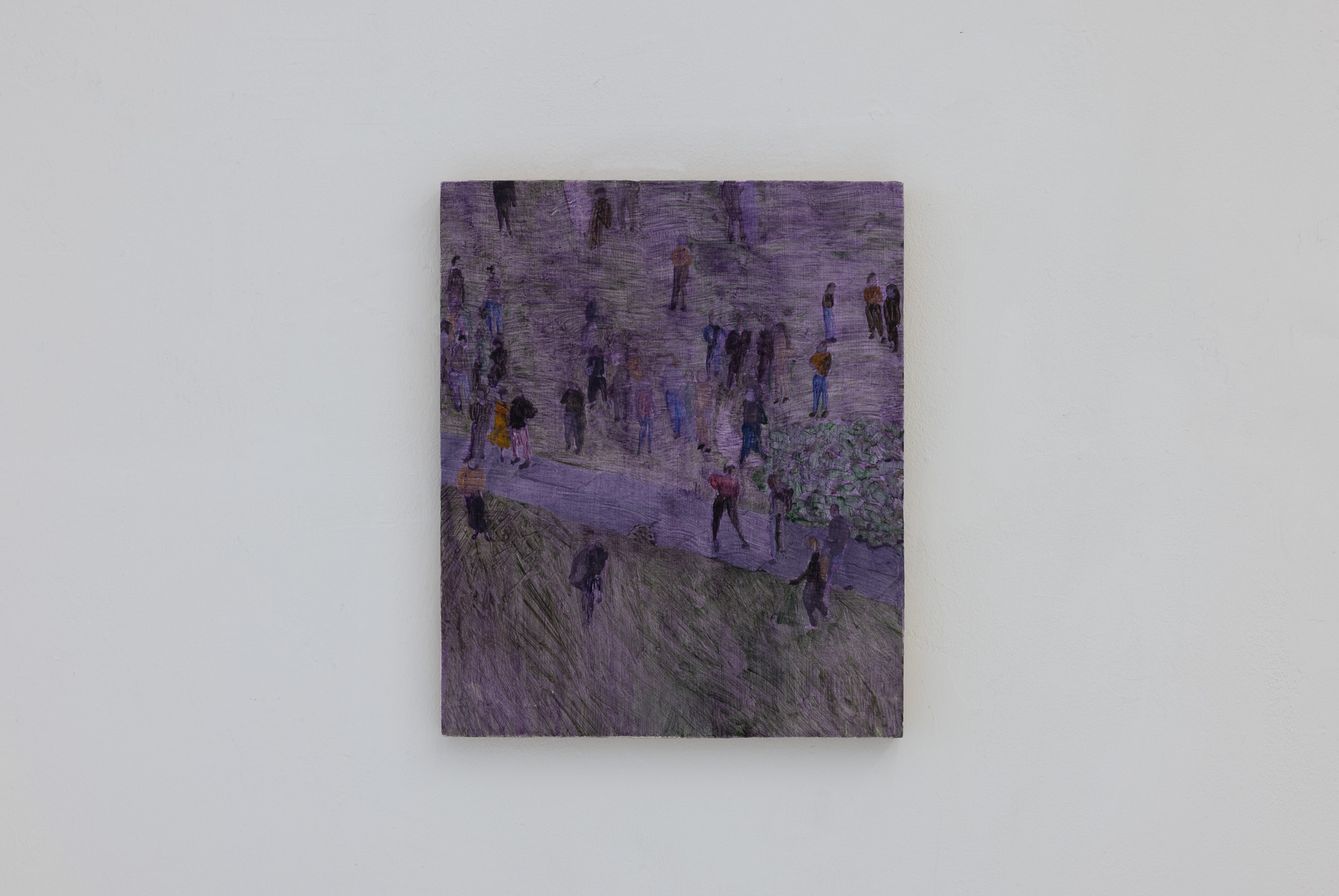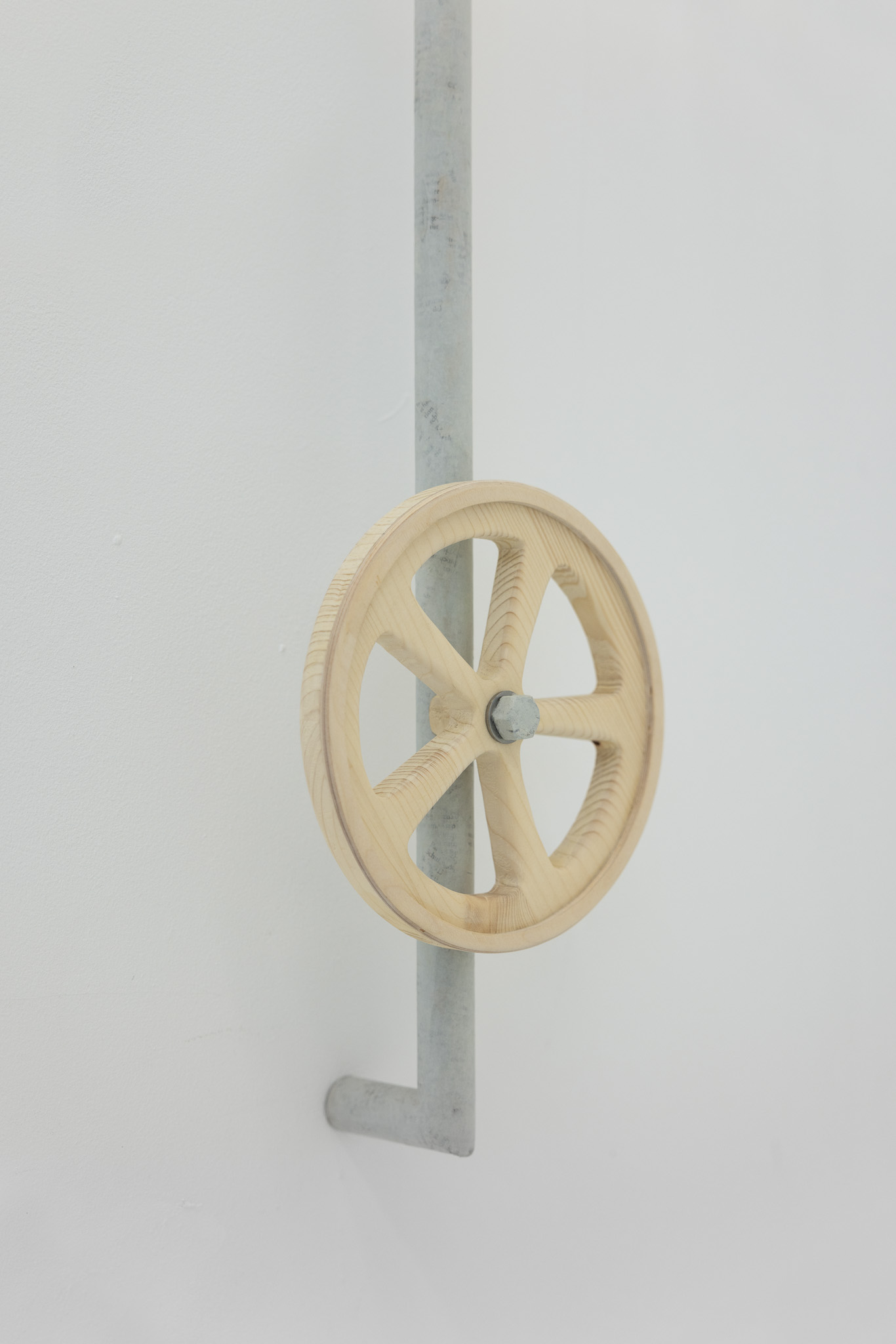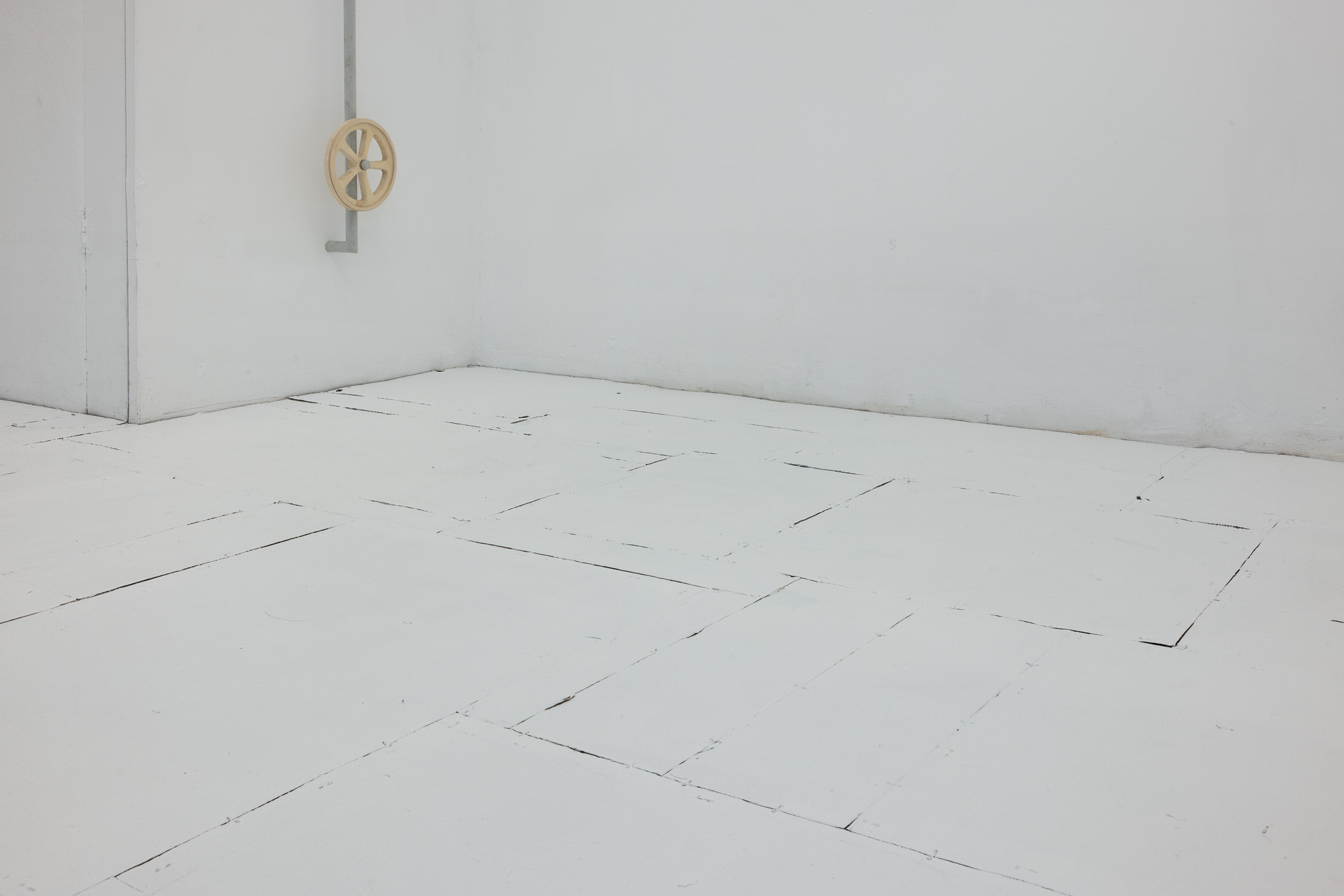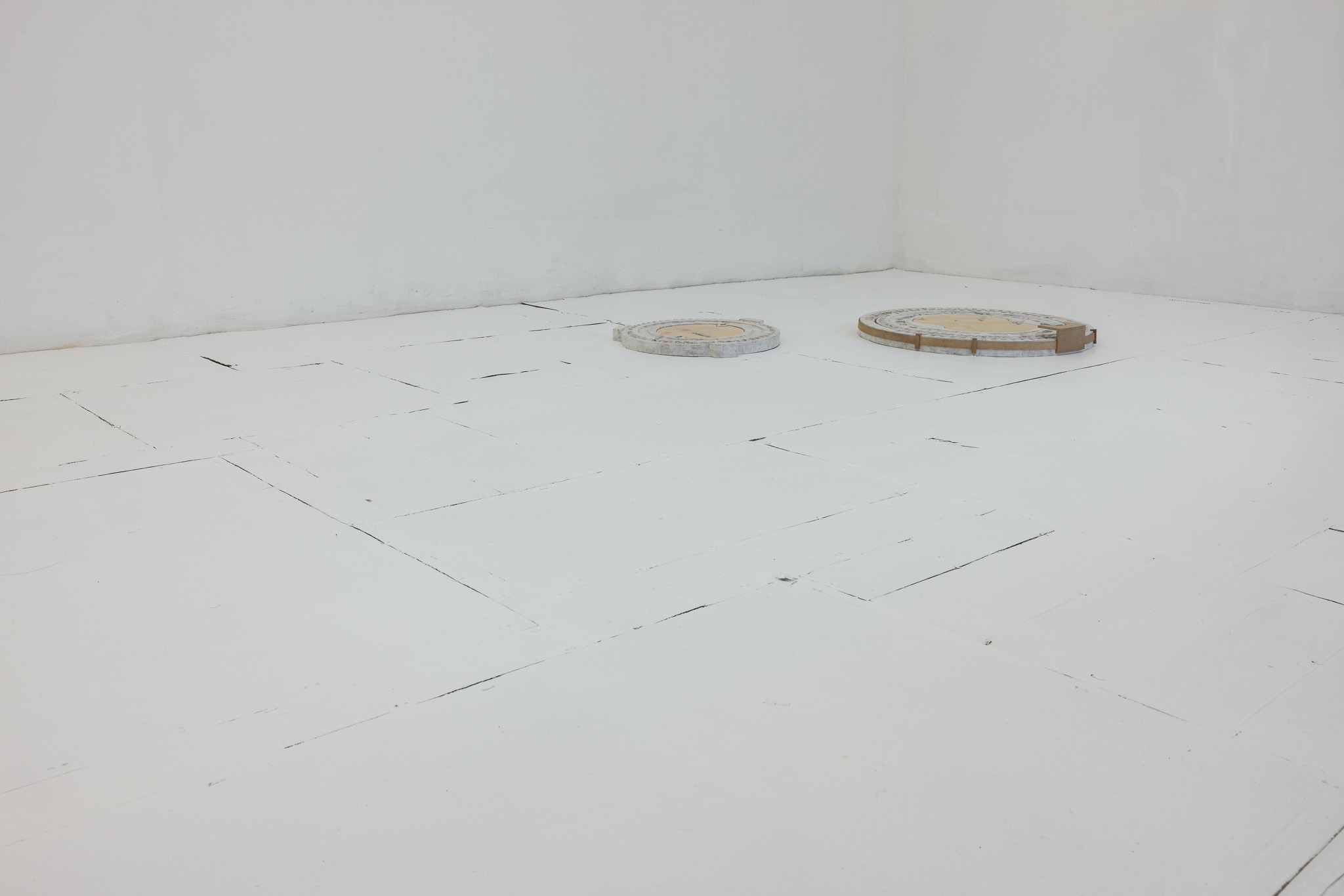TIDAL
An exhibition by Antonio López and Samuel Linus Gromann
Accompanying text by Grant Tyler
Poster design by Rebecca Lothan
Photo documentation by Jiyoon Chung
17.03.-24.03.2023
Opening Friday 17th March at 7 pm
fffriedrich
Alte Mainzer Gasse 4-6
60311 Frankfurt am Main
Car nous voulons la nuance encore
Pas la couleur, rien que la nuance
••••••••••••••
Et tous le reste est littérature.
For what we still desire is the nuance
Not the color, nothing but the nuance
••••••••••••••
And all the rest is literature.
—Paul Verlaine
For the last 50 years or more, aesthetic experience — the presence of an artwork and its effect on a viewer in space — has been relegated to a secondary status in the rubric of art’s value. That is not to say that it has been utterly absent, but it has been significantly under-appreciated. Since 2008, almost every trend of young art has (more or less urgently and self-consciously) reprioritised aesthetic experience as the primary task of artworks and the primary concern of artists. Ironically, during this same time it has become normal for shows to be organized, texts to be written, for careers to be made and broken, based on digital imag- es displayed on small screens. It’s under these circumstances that I’m writing this text in Los Angeles.
The impulse of the show, through its various configurations, speaks to a desire for world building, the strength of which I’m not used to in Los Angeles. Here artists work in shows, as is the rule in Contemporary Art. But at the end of the day the works are predominately discreet, often through serialization. This show, by contrast, proposes a sparse yet totalizing Surrealistic environment, complete with uncanny creatures, unstable surfaces, evasive figures, enigmatic mechanisms, and so on. The artists have chosen a constellation of works from their troves which would suppress a sense of seriality and underscore a dramat- ic, theatrical spatial presence. A friend recently coined a vibe which I think fits well here: “disperse psychedelic noir.” It’s a uniquely modern tone that, anach- ronistically, could be applied to anything from the East Village scene in the 1980s, to the cafés of Breton and Aragon, to the streets of Baudelaire. In any case the attempt here is to create a continuity of space between the objects (as evinced with the floor and the grasshoppers), which is as important to the artists as the degree of completion and continuity apparent in the works themselves.
There is an irreverent attitude in painting coming to the fore in the last few years attempting to navigate the Scylla of ironic resignation and the Charybdis of kitsch sentimentality. It comes on the heels of other trends, some of which still are full of steam, including what I call fantasycore, psychedelic abstraction, what Barry Schwabsky called “perverted realism” and so on. Unlike these other trends which also foregrounded the expe- rience of the work’s presence, there is a pop sensibility to this later trend. For reference, look at the paintings of AJ Kahn or Maggie Friedman in LA, Jake Shore, Joe Speier, Olivia van Kuiken, or Joshua Boulos in New York, and even a few in Melbourne including Josh Klein and others around Guzzler & asbestos. It is an imperfect grouping but I’m con- fident in some elusive, binding, and unique goal which all these painters implicitly share. My sense from conversations with Antonio and from seeing others of his paintings in the States is that he shares in this attitude: that before turning to concerns of formal historical development or symbolic meaning, a more pri- mary and naked experience of a painting is necessary, one which isn’t overly romantic nor cynical, but rather invokes these paradigms as interpenetrating and interdependent aspects of human experience. The works Antonio’s selected for this show foreground a sense of immensity, of emptiness and aimlessness, with the figurative work even calling to mind the carnivals of Ensor. There is a casual attitude in the works, a kind of sprezzatura. As though in their execution they are decidedly “just right,” and “good enough.” This is a well-at- tenuated irreverent disposition coming through. They are not ironic and cynical like much of the painting in the Contemporary era, nor are they sentimental and quaint like kitsch. They sit around and between or beyond.
Samuel’s sculptures on the other hand, share qualities with an adjacent phenomena of the last 7 years or so: Neo-Surrealism. Like the more recent afore- mentioned irreverent trend in painting, the Neo-Surrealists also prioritize immediate aesthetic concerns over the anxiety of formal progress. In many ways, Neo-Surrealist painting and sculpture — like the original Surrealist painting and (to a lesser extent) sculpture — is retrograde; is dependent on classical ideas about form and representation to bring out juxtapositions between subjects and materials. I’m not sure one could classify Samuel’s works here exactly in that sense. Pronouncing what these sculptures are of would be nonsense. It is, however, about articulating a texture of connotations and as- sociations. Beyond the infrastructural motifs, the astrological and occult associations, the strangeness of their newspaper treatment, something additional is generated: these elements are suggestive of a negative image in the work. These threads encircle an aesthetic idea which cannot be pronounced, only gestured towards. It’s the careful staging of these interrelations that form the true venue of Samuel’s work.
Antonio and Samuel’s respective arts are social, which is to say they are exoteric in their orientation as they are influenced by themes and events from without. But by the same coin they are strongly invested in the unique experience they encourage their audience to have with the works. The generalisation to make about young art of the past 15 years is its predilection for aesthetic immediacy, and its allergy to overly Conceptual or literary approaches, at least insofar as the aesthetic immediacy is jeopardised or is dependent on an intellectual knowl- edge outside of the work itself. The works presented here are a part of that seismic shift outward, to the potential of affectual presence. They are made facing you, the viewwer. It is for you to feel them and judge their nuance or lack thereof; to scrutinise any overly sentimental color, if it is there. For it is only by this experience that these works could be said to be anything more than littérature.


